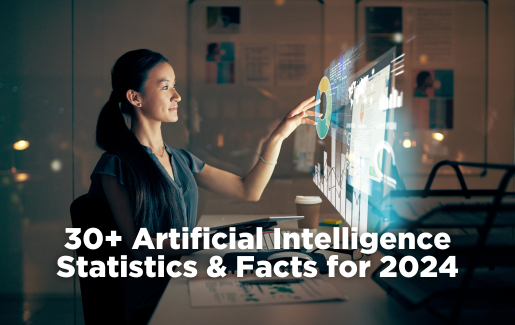 Web3 is a term that has gained traction in the last couple of years. Many technology leaders believe it could hold the key to how we will interact with the internet of the future. To date, utilization of the internet has been limited by static technologies that have difficulty communicating with one another and a lack of control over how personal data is shared. Web3 has the potential to create a more user-centric internet without corporate controls. As technologies advance to a point where the move to Web3 is possible, many expect it to play a primary role in how technology is used.
Web3 is a term that has gained traction in the last couple of years. Many technology leaders believe it could hold the key to how we will interact with the internet of the future. To date, utilization of the internet has been limited by static technologies that have difficulty communicating with one another and a lack of control over how personal data is shared. Web3 has the potential to create a more user-centric internet without corporate controls. As technologies advance to a point where the move to Web3 is possible, many expect it to play a primary role in how technology is used.
What Is Web3?
Web3 is a blockchain-based internet that would allow users to access web that has been decentralized. Rather than being owned and run by corporate and government entities, Web3 would utilize blockchain technology to create records of transactions that would be owned by users themselves.
Web3 internet would involve a series of applications that are developed by users which would be used to navigate the internet to access social networks and interact with brands and other users. Using open-source technology, users would regain control of their personal information and how they use the web, moving away from the current model of centralization.
The term Web3 indicates that it is essentially the third iteration of the web. Here is a brief recap of the different iterations of the internet:
- Web1: Involved internet that was static with little user interaction. This version was used in the 1990s and, while valuable, there were no real algorithms to help users quickly identify the information they sought.
- Web2: This iteration is more dynamic and allows for user interactions and content distribution and sharing on interactive platforms, such as social media. Web2 is the current version we are still using.
- Web3: This iteration will employ technologies such as artificial intelligence (AI) and machine learning (ML) alongside blockchain to provide hyper-tailored content for each user. The decentralization is intended to limit certain political or culturally charged content.
It’s important to understand that Web3 is still conceptual, even though the technology that will make it possible is being heavily investigated at this point. Now that significant advancements are being made with various key technologies that are essential for Web3, experts believe great strides will be made between now and 2030.
Here’s a quick review of the technologies that will enable Web3:
- AI and machine learning: These technologies have allowed us to make progress toward autonomous technology where AI will help extract insights from data and machine learning algorithms will make for a greatly improved user experience.
- Blockchain: Based on blockchain technology, Web3 would allow for greater transparency and user control of data as transactions are open and can’t be erased.
- Edge computing: Edge computing is essential for reducing latency when Web3 is used at scale. This technology will make more efficient use of computing resources to allow for widespread usage.
- NFTs: Non-fungible tokens are tokens based on the blockchain that represent real or digital assets on the distributed ledger.
- Metaverse: The metaverse would utilize Web3 to connect users and create immersive digital experiences.
- IoT: IoT enables better communications between technology, allowing larger ecosystems to work together.
- Semantic Web: The Semantic Web refers to a framework for structuring web pages which will help give better meaning to information so that computers and people can work more cooperatively and seamlessly.
- Spatial computing: Spatial computing involves using sensors, cameras and other devices to enhance user connectivity and create 3D interfaces where users can create and manipulate content in their physical space.
- dApps: dApps are decentralized applications that operate autonomously using blockchain technology. dApps would essentially form the foundation of Web3 and would be how users access and navigate the internet.
How Will Web3 Impact Data in the Future?
There’s a lot of excitement surrounding the possibilities for Web3 when it comes to the impact on data. Recent conversations regarding the use of personally identifiable information (PII) and how organizations use it based on internet usage has sparked concern among the general public. Web3 offers the hope that using sophisticated AI and machine learning technology will increase security and give users more control over their personal data and who has access to those details.
Additionally, Web3 is intended to give extremely personalized content so that the user experience is much more efficient and highly personalized, instead of Web2 where users have to search for the best-suited content.
The new technologies used in Web3 will also allow for greater transparency of data which will limit control of data by governing entities, eliminating the problems involved with intermediaries and middlemen. Web3 will essentially be user-centric and give people more options for interactions. Some exciting potential involves defi, a subset of the crypto movement which will give people more control over their finances. Another concern is the vast amount of computing power that will be needed to accommodate the needs of Web3. Leaders anticipate developments in hardware to accommodate the coming needs of Web3.
Top Web3 Statistics and Facts
Here are some of the top facts and statistics that make Web3 such an interesting phenomenon:
- Web3 is the foundation for the metaverse
- Web3 purchases will rely on cryptocurrency, such as ETH or Bitcoin
- 73 million gamers use Web3-based games, such as the popular games Roblox and Fortnite
- Due to the secure nature of blockchain, nearly 50% of all finance apps use Web3 technology
- The most expensive NFT ever sold is The Merge which sold for $91.8 million in 2021
- Hong Kong set up a task force in July 2023 with the sole purpose of advancing Web3
- In early 2023, Amazon increased their hiring to grow their Web3 development efforts and aid in the launch of an NFT marketplace
- Decentralized finance is a key motivator for the development of Web3 technology
- Polkadot is the highest-ranked Web3 token on the market because it allows for different blockchains to communicate with one another
When Was the Term Coined?
The term Web3 was actually coined in 2014 by Ethereum co-founder Gavin Wood. Wood went on to found the Web3 Foundation and advocate for the advancement of a decentralized web. He even assisted in the development of Solidity which is a programming language used for writing smart contracts, a technology that allows for trusted crypto exchanges.
Market Capitalization
The potential for market expansion is high for Web3. Many experts are expecting businesses to leverage Web3 greatly in the years to come:
- The market value of Web3 in 2023 was $2.86 billion with a growth outlook of 44.5%
- The global market is expected to hit $49.1 billion by 2030
- North America currently holds just upwards of 1/3 of the global Web3 market (34%)
- Europe is a close second with 24% and Asia-Pacific comes in third with 18%
- The global blockchain market was valued at $17.46 billion in 2023 with a CAGR of 87.7% by 2030
- The global market value of the metaverse was valued at $83.9 billion in 2023 with a CAGR of 48% by 2030
Number of Companies Involved in Web3 Projects
It can be difficult to pinpoint exactly how many Web3 projects are currently being launched, but we do know that the number is growing at a steady rate:
- Companies like Starbucks, Salesforce, Nike and JP Morgan are utilizing Web3 in 2024
- At the end of 2022, there were 23,343 Web3 developers actively developing projects
- A Crunchbase report shows that “Web3 projects raised about $16 billion in the first part of 2022, but in 2023 raised just $3.6 billion
Who Knows About Web3?
Although the term Web3 was coined nearly 10 years ago, the idea gained interest in 2021 due to investments from cryptocurrency lovers and high-profile tech companies, along with concerns about too much corporate control of the market. Since then:
- Research from UTA and Vox Media shows that 87% of Americans between 13-56 would engage with a celebrity they love in the metaverse
- 51% of Gen Z expect to do some of their work in the metaverse, followed closely by 48% of millennials
- Approximately 54% of American consumers have never heard of Web3
- 23% of millennials own NFTs
- Nearly 50% of crypto buyers and sellers are millennials
- 40% of the total Web3 community are millennials, 30% Gen Z and 15% Gen X
When Will We See Web3?
Although Web3 offers the potential for a user-centric web, we still have hurdles to overcome. Without tying together the multiple metaverses and blockchain technologies out there, we’ll never see the true interoperability that we envision now. Although with persistence and continued development, most experts are confident we’ll be able to benefit from the functionality that Web3 offers in the coming decade.
Want even more interesting IT and AI statistics and facts?
Check out CompTIA Quick Stats, a library of data from CompTIA's research team to use in presentations, strategic documents and market research.

 Add CompTIA to your favorite RSS reader
Add CompTIA to your favorite RSS reader

